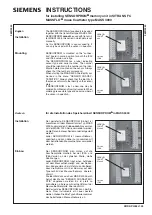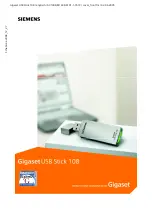
99
the backup TeraStation.
Conditions for determining when the main TeraStation has failed:
When the backup TeraStation is unable to detect the main TeraStation for a certain amount of time
By default, the backup TeraStation attempts to detect the main TeraStation at 60-second intervals. If it is unable to detect
the main TeraStation after fi ve consecutive attempts, the main TeraStation is determined to have failed. To change the
settings, click [Advanced Settings] and change the setting in the displayed screen.
Even if the main TeraStation has not failed, if the backup TeraStation is unable detect the main TeraStation for fi ve con-
secutive attempts due to a network problem, this is determined to be a failure, and operation will switch to the backup
TeraStation. If this happens, failover must be reconfi gured in the original main TeraStation.
When one of the following errors occurs in the main TeraStation
•
E12 Cooling Error
•
E13 RAID in Degrade Mode
•
E14 Cannot Mount RAID Array
•
E15 Too Many Bad Sectors
•
E16 Hard Drive Not Found
•
E22 Cannot Mount Hard Drive
•
E23, E30 Hard Drive Failed
If data is written by AFP from Mac OS X, the system processing speed may slow down. If this happens, try using SMB to
write data.
If NFS is set to kernel mode, fi les and folders written using NFS are not copied to the backup TeraStation. The NFS setting
can be changed from kernel mode to user mode in the TeraStation's Web Admin interface by navigating to [File Sharing]
-
next to [NFS] - [Edit].
Settings that are not saved to the backup TeraStation:
The settings below are not copied from the main TeraStation to the backup TeraStation. If operation is switched from the
main TeraStation to the backup TeraStation, make a note of the original settings so that they can be made manually.
•
Web server (including php)
•
MySQL Server
•
Direct Copy
















































